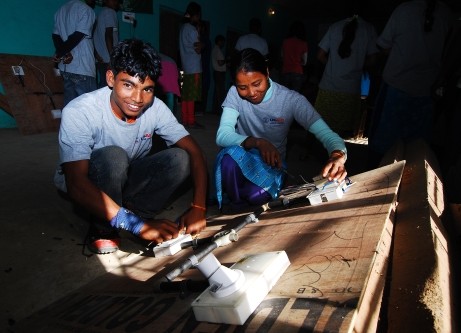
Nepal is the poorest country in South Asia and the 17th poorest in the world. Approximately 25 percent of Nepalis live below the poverty line. There is a substantial difference in poverty levels among Nepal’s various ethnic and caste groups, and between different regions of the country. An unemployment rate of 42 percent has created a sense of vulnerability and hopelessness in parts of rural Nepal. More than half of the country’s population is under the age of 35, and each year, more than 300,000 of these young people join the ranks of those looking for work, with many either striving to go abroad as unskilled labor or languishing as part of the unproductive workforce.
USAID’s economic growth activities aim to improve the income-generating potential of the poorest of the poor, expand young people’s access to jobs, increase farmers’ incomes and food security, help the Government of Nepal address macroeconomic and agricultural sector policies, and improve Nepal’s business environment for private sector–led growth. Economic growth efforts also encourage competitiveness and exports; improve trade and fiscal policies and practices; and strengthen microfinance policies and institutions by working with the Government of Nepal, the private sector, think tanks, and civil society.
- USAID trained more than 74,300 disadvantaged and conflict-affected youth to increase their employment and income generation. In addition to the 74,300 direct beneficiaries, USAID’s assistance reach at least 440,000 additional family members—about 11.9 percent of mid-western population—the most conflict affected and one of the poorest regions of Nepal. More than 80 percent of those who graduated from the USAID-supported training program have jobs or are self-employed with average monthly incomes of 4,400 Nepali rupees ($50).
- USAID has strengthened Nepal’s customs, taxation, revenue analysis, anticorruption, and World Trade Organization (WTO) compliance procedures. These initiatives have enabled the Government of Nepal to move toward WTO compliance in areas such as establishment of customs valuation, harmonization, post clearance audit, revenue analysis, and forecasting and risk management. These are important steps in improving Nepal’s economic foundations to promote rapid, sustained, and inclusive economic growth.








Comment
Make a general inquiry or suggest an improvement.